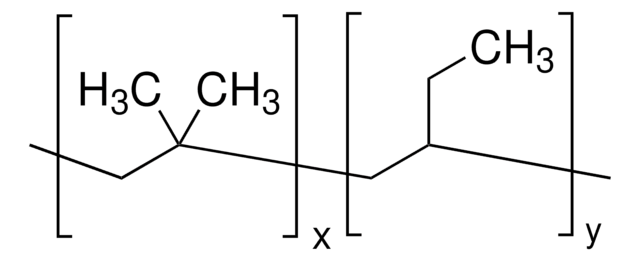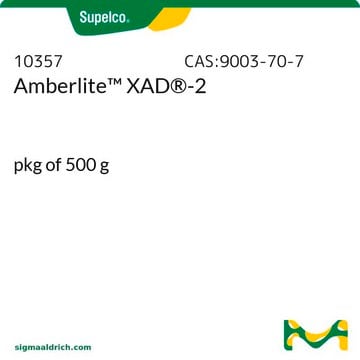181498
Polyisobutylene
average Mw ~4,200,000, average Mn ~3,100,000 by GPC/MALLS, average Mv ~4,700,000
About This Item
Prodotti consigliati
Stato
slab/chunk
PM
average Mn ~3,100,000 by GPC/MALLS
average Mv ~4,700,000
average Mw ~4,200,000
contiene
500 ppm BHT as stabilizer
Indice di rifrazione
n20/D 1.51
Densità
0.92 g/mL at 25 °C (lit.)
Stringa SMILE
CC(C)=C
InChI
1S/C4H8/c1-4(2)3/h1H2,2-3H3
VQTUBCCKSQIDNK-UHFFFAOYSA-N
Cerchi prodotti simili? Visita Guida al confronto tra prodotti
Descrizione generale
Applicazioni
Codice della classe di stoccaggio
10 - Combustible liquids
Classe di pericolosità dell'acqua (WGK)
WGK 3
Punto d’infiammabilità (°F)
Not applicable
Punto d’infiammabilità (°C)
Not applicable
Dispositivi di protezione individuale
Eyeshields, Gloves
Scegli una delle versioni più recenti:
Possiedi già questo prodotto?
I documenti relativi ai prodotti acquistati recentemente sono disponibili nell’Archivio dei documenti.
Filtri attivi
Il team dei nostri ricercatori vanta grande esperienza in tutte le aree della ricerca quali Life Science, scienza dei materiali, sintesi chimica, cromatografia, discipline analitiche, ecc..
Contatta l'Assistenza Tecnica.





